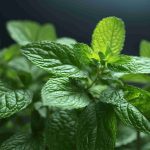Comfrey oil is a versatile, healing oil made from the comfrey plant. Long used in herbal medicine, comfrey contains allantoin, a compound that helps promote new skin cell growth and healing. With it’s anti-inflammatory and soothing properties, comfrey oil can be used to help treat minor skin irritations, small wounds, sprains and bruises.
Making your own comfrey oil at home is easy, affordable and rewarding. This complete DIY guide will teach you two methods for making infused comfrey oil, share tips for choosing quality comfrey, provide usage and storage instructions and suggest remedies you can create with your homemade comfrey oil.
Benefits of Comfrey Oil for Skin and Health
Before delving into oil preparations, let’s look at why comfrey oil is worth making.
Promotes Skin Cell Regrowth
The allantoin in comfrey stimulates healthy new cell production and the growth of skin tissue. This helps heal wounds, abrasions, burns and irritated skin. Massaging comfrey oil on sprains or bruises also accelerates healing.
Anti-Inflammatory Effects
Comfrey oil reduces inflammation and swelling when applied topically. It’s especially soothing for painful joints or muscles. The herb’s anti-inflammatory properties also help alleviate skin irritations and sensitivity.
Moisturizes Skin
The fatty acids in comfrey oil deeply hydrate and moisturize skin while protecting cell membranes. This helps improve skin texture and appearance.
Safe Alternative to Comfrey Salves
Taking comfrey internally can cause liver damage due to it’s pyrrolizidine alkaloids. But when comfrey is used externally and not ingested, it is very safe to use. Infused comfrey oils allow you to harness the herb’s healing benefits without risk.
What You’ll Need to Make Comfrey Oil
Making infused herbal oils simply requires two main ingredients – herb and oil. Here’s a quick look at the basic supplies you’ll need.
Comfrey Herb
You can use either fresh or dried comfrey leaves and stems to prepare comfrey oil. Pick comfrey leaves once the plant is 2-3 feet tall and in full bloom.
If using fresh comfrey, gather at least 3-4 cups leaves and tender stems chopped into pieces.
For dried comfrey, you’ll need 1 cup crumbled dry leaves. Use comfrey that you grew and dried yourself or purchase high quality dried herbs from a reputable supplier.
Carrier Oil
You’ll infuse your comfrey into oil to extract it’s healing properties. The oil preserves the comfrey so it can be stored long term.
Olive, grapeseed and almond oils are excellent emollient carrier oils for comfrey infusions. Their high vitamin E content helps prolong shelf life.
Other skin-nourishing oils like avocado or jojoba also work well. You’ll need 2 cups of carrier oil.
Cheesecloth
Cheesecloth will be used to strain excess plant material from your finished comfrey oil infusion. Make sure you have enough layers of cheesecloth for adequate filtering.
Sterilized Jar
Choose a wide-mouthed quart-sized glass jar with lid to prepare your comfrey oil in. Thoroughly wash and sterilize the jar before using.
Step-by-Step Guide to Making Comfrey Oil
Now that you understand the therapeutic perks of comfrey oil and have gathered your supplies, let’s get down to making your own healing oil at home.
There are a couple methods you can follow – the hot process or the cold maceration process. The steps are outlined below.
Hot Oil Infusion
This quicker hot oil infusion method produces comfrey oil in just hours instead of weeks.
- Step 1. Chop your fresh herbs finely or crumble dried comfrey. Loosely pack the leaves into your sterilized jar.
- Step 2. Pour carrier oil of choice over the herbs until they are completely covered by 1-2 inches of oil.
- Step 3. Place a couple layers of cheesecloth over the mouth of the jar and tightly screw on the lid. This prevents water evaporating into your oil during the heating process.
- Step 4. Carefully place your jar in a small saucepan or double boiler filled with 2-3 inches water over very low heat. Or put in a small slow cooker on warm setting.
- Step 5. Gently warm the oil for 4-6 hours, keeping the water temperature below 100° F. Check water levels periodically and top up so jar remains upright.
- Step 6. Remove the jar and allow oil to cool completely before opening lid.
- Step 7. Once cooled, pour oil through cheesecloth lined funnel into storage bottles, squeezing herbs to extract all liquid.
And just like that, your comfrey oil is ready to use!
Cold Maceration Method
For a zero-heat approach that maintains more plant compounds, follow this cold maceration technique.
- Step 1. Follow steps 1-3 above for packing jar of herbs topped with carrier oil and covering with cheesecloth and lid.
- Step 2. Place jar in a warm spot out of direct sunlight and allow to infuse for 4-6 weeks, shaking daily.
- Step 3. Pour through cheesecloth into storage bottle, squeezing herbs to capture all oil.
It takes longer, but good things come to those who wait!
Tips for Making Perfect Comfrey Oil
Here are a few handy tips to help your comfrey oil turn out picture perfect.
- Use the best quality herbs and oil available to you
- Weigh down cut herbs in oil to minimize oxidation
- Shake jar daily to distribute plant compounds
- Make sure storage bottles protect oil from UV light after straining
- Label bottles clearly with name, date and any additions
Now let’s look at the exciting things you can do with your liquid gold healing oil!
10 Uses for Homemade Comfrey Oil
Made correctly, comfrey oil will keep for 12-18 months. Here are some great ways to reap it’s soothing benefits:
1. Massage Oil for Pain Relief
Gently massaging painful, swollen joints and muscles with comfrey oil can offer powerful temporary pain relief and quicken healing.
2. Healing Salve for Wounds
Melt beeswax into comfrey oil to create an antimicrobial healing salve ideal for soothing cuts, bites, burns, sores and abrasions.
3. Acne Spot Treatment
Dab comfrey oil onto blemishes to reduce inflammation and unclog pores overnight. The allantoin also accelerates skin turnover.
4. Eczema Soothing Oil
Hydrate and repair irritated eczema patches by smoothing on comfrey oil several times a day. It’s anti-inflammatory and emollient properties calm rashes.
5. Natural Insect Bite Relief
Stop the itch and swelling fast by applying comfrey oil to painful insect bites and stings as needed.
6. Post-Shaving Skin Saver
Prevent bumps, burning and redness after shaving by smoothing comfrey oil over clean skin. It’s cooling action also helps cuts clot faster.
7. Dry Skin Moisturizer
Deeply nourish and restore supple softness to dry elbows, hands and feet by massaging in hydrating comfrey oil daily. For intensive care, cover treated areas with gloves or socks overnight.
8. Skin Healing Bath Soak
Soothe irritated scalp, sore muscles or skin conditions by adding a spoonful of comfrey oil to a warm healing bath. It’s medicinal compounds will infuse the water while moisturizing your skin.
9. Natural Lip Balm
Mix comfrey oil with melted beeswax, coconut oil and peppermint essential oil for the perfect soothing natural lip balm to nourish dry, cracked lips.
10. Hair Conditioning Treatment
Revitalize dry hair and scalp by massaging comfrey oil into hair before shampooing. Leave on for 30 minutes before washing as usual for extra nourishment and sheen.
With so many medicinal uses, quality comfrey oil deserves a permanent place in your natural health cabinet!
Potential Health Risks
Liver Toxicity: Comfrey contains pyrrolizidine alkaloids (PAs) that can cause liver damage if ingested. Always clearly label comfrey oil as external use only. Never ingest comfrey oil or use internally.
Skin Irritation: Some people may experience contact dermatitis or skin irritation when applying comfrey oil. Do a patch test before widespread use. Discontinue use if any burning, itching, rash or redness develops.
Medication Interactions: Comfrey may interact with certain medications that are metabolized by the liver. Check with your doctor before using comfrey oil if you take any medication, especially prescriptions, diabetes drugs, blood thinners, cholesterol drugs, antidepressants or painkillers.
Contamination Risk: Toxic mold can sometimes contaminate improperly made comfrey oil. Ensure your preparation equipment is meticulously sterilized. Follow storage guidelines carefully and do not use any oil that shows signs of mold. Discard questionable preparations.
Allergies: Some people may have plant allergies to comfrey or certain carrier oils. Do a skin patch test with a tiny amount before using comfrey oil if you have plant allergies. Monitor for hives, swelling or difficulty breathing.
Proper Storage for Maximum Shelf Life
To retain it’s potency and prevent spoilage, be sure to store your finished comfrey oil properly. Here’s how:
- Pour into small, clean glass bottles with tight fitting lids
- Make sure bottles are thoroughly clean and dry before decanting oil
- Use glass eyedroppers so you don’t contaminate the remaining oil
- Ensure bottles protect oil from heat and light
- Label oil with name/date/additions
- Store in a cool, dark location away from heat and sunlight
- Kept ideal storage conditions, comfrey oil lasts 12-18 months
Signs Your Comfrey Oil May Be Spoiled
Despite your best storage efforts, herbs oils can sometimes go off before their time. Here’s what to watch out for:
- Change in color: Oil darkens significantly or changes hue
- Water accumulation: Evidence of moisture in bottles
- Change in scent: Smell becomes unpleasant or rancid
- Mold: Any unusual spores, fuzzies or film develops
- Change in texture: Consistency becomes extra thick
- Floaties: Tiny bubbles, sediment or particles appear floating when bottles is shaken
If you notice any of the above, it’s best to discard your comfrey oil and make a fresh batch. Don’t despair, now you can put all the things learned to work!
Troubleshooting Problems with Comfrey Oils
Sometimes comfrey oil preparations don’t go according to plan. Here’s how to troubleshoot some common issues when making comfrey oil at home:
Problem: Green, black or brown discoloration appears in comfrey oil.
Solution: This is natural plant chlorophyll and tannins being leached from the herbs. Don’t worry, it’s harmless and happens more with fresh plant preparations. Filter carefully through fine cheesecloth before decanting.
Problem: Tiny bubbles or particles appear floating in finished oil.
Solution: This occurs if water droplets evaporate into your infusing oil. In the future, ensure plant matter is pressed tightly into jar and completely covered by at least 1 inch oil before heating. Cheesecloth covering also protects. When straining, allow oil to settle completely undisturbed for a few days then carefully pour or siphon off only the clear oil, leaving any sediment behind.
Problem: Mold, floaties or film develops on surface of comfrey oil.
Solution: This is a sign of contamination from contact with water, utensils or hands. Sadly, homemade oils with visible contamination cannot be salvaged and should be discarded. In future, take care to keep equipment bone dry before pouring in oil. Use clean, dry utensils and pipettes so as not to introduce water. Make sure lids seal tightly.
FAQs
Do a skin patch test first. Comfrey allergies are uncommon but possible. Stop using if irritation or rash develops.
There’s not reliable data on using comfrey oil in pregnancy. For safety, check with your doctor first.
Stored properly in a cool dark place, comfrey oil will keep 12-18 months. Refrigeration extends shelf life. Discard if it smells unpleasant or looks unusual.
Yes, comfrey oil can be used on closed wounds, scrapes, cuts, bruises etc. It’s allantoin promotes tissue regeneration. Avoid using it inside deep, open wounds however. Clean injuries first.
Oil preparations better preserve comfrey for long-term use. Oils also cover larger areas easily than thick salves and penetrate skin layers faster.
Yes, mild greenish or brownish tints are common and result from natural plant chlorophyll, tannins and pigments being extracted into the oil. It’s harmless and doesn’t affect potency.
No! Comfrey oil should never be ingested as it’s pyrrolizidine alkaloids can damage the liver. Use comfrey oil externally ONLY. Clearly label your bottles “for external use only.”
If contamination happens, there’s serious health risk so discard the oil. Use meticulous sterile procedure next time and follow proper storage guidelines to prevent mold growth.
Final Thoughts
Follow the instructions carefully when making comfrey oil and you should be rewarded with a deeply healing oil with many benefits for minor skin complaints. Make sure to label your creation clearly so you know what’s inside and when it was made. Over time, you’ll develop optimal techniques for crafting high quality herbal oils.
May your homemade comfrey oil serve your household with an abundance of natural healing!
Read More
From Garden to Table: Growing and Crafting Chive Blossom Vinegar




